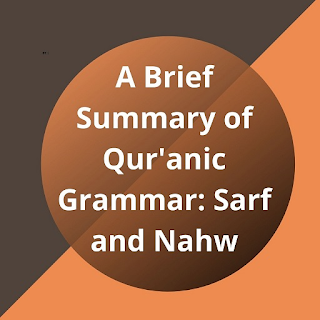Sarf and Nahw Summary: 1.0B - Title

بِسْمِ اللهِ الرَّحْمٰنِ الرَّحِيْمِ A Brief Summary of Quranic Grammar: Sarf and Nahw خُلَاصةُ الصَّرفِ وَالنَّحْوِ Word & Sentences Grammar Summary
This free blog provides books for English-speaking Ummah in an easy-to-understand language. Four books authored have been uploaded to this blog: Arabic Grammar For Beginners, Nahw Meer, Sarf/Nahw Intermediate, and Darsi Tafseer Surah Nabaa to Surah Infitaar. Selected thoughts from Ahadith and scholars are also included and are ongoing. Use the menu, top left 3 bars to navigate.










